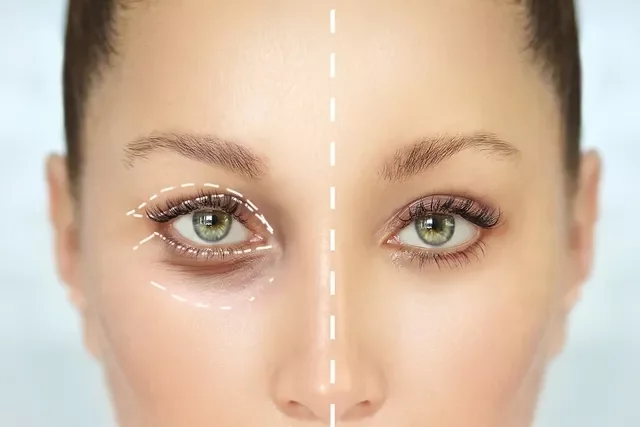Blepharoplasty: A Comprehensive Guide to Eyelid Surgery, Benefits, and Recovery
As we age, the delicate skin around our eyes can start to lose its elasticity, leading to sagging, puffiness, or drooping eyelids. These changes not only affect our appearance but can also impact our self-esteem and even our vision. If you’ve been considering eyelid surgery, or blepharoplasty, you’re not alone. In this article, I’ll walk you through everything you need to know about this life-changing procedure: what blepharoplasty is, when it’s indicated, how it is done, and most importantly, how to navigate the recovery process.
What is Blepharoplasty?
Blepharoplasty, commonly known as eyelid surgery, is a cosmetic procedure designed to correct issues with the eyelids. Whether you have excess skin, puffiness, or drooping eyelids, blepharoplasty can restore a youthful and refreshed appearance. This procedure is not only performed for aesthetic reasons but also has functional benefits, especially for those whose vision is impaired by sagging eyelids.
There are two main types of blepharoplasty: upper eyelid surgery and lower eyelid surgery. Each serves different purposes and addresses specific concerns:
- Upper eyelid blepharoplasty: This surgery targets excess skin and fatty tissue on the upper eyelids. It can improve the appearance of drooping eyelids and even improve vision for individuals whose eyelids may obstruct their line of sight.
- Lower eyelid blepharoplasty: This surgery focuses on the lower eyelids, correcting puffiness and bags under the eyes. It’s ideal for those struggling with tired-looking eyes caused by fatty deposits or loose skin beneath the eyes.

When is Blepharoplasty Indicated?
Blepharoplasty is typically indicated when one or more of the following issues are present:
- Sagging or drooping eyelids: Over time, the skin around the eyes loses elasticity, causing the eyelids to sag. This can result in a tired, aged look. In some cases, the excess skin may even obstruct vision, making it difficult to see properly.
- Under-eye bags: The fat under the eyes can protrude, causing puffiness and dark circles. Lower blepharoplasty is often sought after to remove or reposition this fat to restore a smoother, more youthful appearance.
- Excess skin: As we age, the skin loses collagen and begins to sag. This excess skin can accumulate around the eyelids, affecting both the upper and lower parts of the eyes. The surgery removes or tightens this skin for a more rejuvenated look.
- Fat deposits: Fatty tissue can accumulate around the eyelids, causing a puffed-up or swollen appearance. Blepharoplasty can remove or redistribute this fat, leaving a more balanced and refreshed eye contour.
- Functional issues: For some, sagging eyelids can affect vision. When the upper eyelid droops significantly, it can obstruct part of the field of vision. In these cases, blepharoplasty can be not just cosmetic but medically necessary to improve visual function.
How is Blepharoplasty Performed?
Blepharoplasty is typically performed under local anesthesia with sedation, meaning you’ll be awake but relaxed during the procedure. In some cases, general anesthesia may be used, especially if other procedures are being performed simultaneously. The procedure usually lasts between one and three hours, depending on whether it involves the upper or lower eyelids, or both.
Upper Eyelid Surgery:
- The surgeon begins by making incisions along the natural folds of the upper eyelids to minimize visible scarring.
- Excess skin, muscle, and fat are then carefully removed or repositioned.
- The incision is closed with fine sutures, and the skin is gently lifted, resulting in a more youthful, open-eyed look.
Lower Eyelid Surgery:
- The surgeon may make an incision just below the lower lash line or inside the lower eyelid, depending on the technique chosen.
- Fat is either removed or redistributed to correct puffiness and under-eye bags.
- Excess skin may be removed, and the remaining skin is tightened for a smoother appearance.
In cases where the lower eyelid incision is made inside the eyelid (transconjunctival approach), there are no visible external scars. This technique is often used when the patient only requires fat removal without the need for skin tightening.
The Recovery Process
The recovery process after blepharoplasty is crucial for ensuring optimal results. It’s essential to follow post-surgical care instructions provided by your surgeon to minimize complications and promote healing. Here’s a general timeline of what to expect during recovery:
- Immediate Post-Op Period (Days 1-7):
- You will experience some swelling, bruising, and discomfort, which is normal. Ice packs can help reduce swelling and ease any pain.
- Your surgeon may prescribe pain medication or recommend over-the-counter pain relievers.
- It’s important to avoid touching or rubbing your eyes during this period.
- Weeks 1-2:
- The swelling and bruising begin to subside. Most of the discomfort should fade, and you may return to work or social activities, though strenuous exercise should still be avoided.
- Sutures will typically be removed within the first week, and any residual swelling should be mostly gone by the end of the second week.
- Months 1-3:
- By this time, most patients will see significant improvement, though there may still be slight swelling, especially in the mornings.
- Scarring will continue to fade over the next few months. The scars from the upper eyelid surgery should blend with the natural folds of your eyelid, while lower eyelid incisions will be hard to detect.
- It’s crucial to continue following your surgeon’s aftercare instructions and avoid sun exposure to prevent pigmentation changes in the scars.
- Long-Term Recovery (6-12 months):
- Full recovery can take up to a year, though the majority of visible healing will be complete within the first few months.
- By this time, you’ll see the full benefits of your blepharoplasty, with smoother, younger-looking eyelids and an overall rejuvenated appearance.
Key Considerations Before Undergoing Blepharoplasty
While blepharoplasty offers amazing cosmetic and functional benefits, it’s essential to be fully informed and prepared. Here are a few key things to consider:
- Consultation with a Specialist: The first step is scheduling a consultation with a board-certified plastic surgeon or oculoplastic surgeon who specializes in eyelid surgeries. During this consultation, the surgeon will evaluate your eyes and discuss your goals, expectations, and medical history.
- Realistic Expectations: Blepharoplasty can dramatically improve your appearance, but it’s important to have realistic expectations. While the results are often long-lasting, the procedure doesn’t stop the aging process, and you may eventually experience some sagging again in the future.
- Health Conditions: Some pre-existing health conditions, such as dry eye, glaucoma, or thyroid problems, can affect the suitability of the procedure. Ensure that you provide your surgeon with a full medical history during the consultation.
- Cost: The cost of blepharoplasty can vary depending on the complexity of the surgery, geographic location, and the surgeon’s experience. On average, upper eyelid surgery can cost anywhere from $2,000 to $5,000, while lower eyelid surgery may range from $3,000 to $6,000.
Frequently Asked Questions (FAQ)
Q: How long do the results of blepharoplasty last?
A: The results of blepharoplasty can last many years, and in some cases, the improvement can be permanent. However, as you continue to age, you may see some changes in the appearance of your eyelids over time.
Q: Is blepharoplasty painful?
A: Most patients report minimal pain during the procedure, especially with local anesthesia. Post-surgery discomfort can usually be managed with prescribed pain medications.
Q: Can blepharoplasty be combined with other procedures?
A: Yes, blepharoplasty is often combined with other facial procedures such as facelifts, brow lifts, or laser resurfacing to enhance overall facial rejuvenation.
Q: Will I have visible scars after blepharoplasty?
A: Scarring is minimal and typically well-hidden within the natural folds of the eyelids. Lower eyelid incisions, when made inside the lid, leave no visible external scars.
Q: What should I avoid after blepharoplasty?
A: After blepharoplasty, avoid strenuous physical activity, sun exposure, and touching or rubbing your eyes. Following your surgeon’s instructions carefully is crucial for optimal healing.
Take the First Step to a New You
Blepharoplasty offers a remarkable opportunity to rejuvenate your appearance and improve your self-confidence. Whether you’re seeking to eliminate drooping eyelids, reduce puffiness, or simply refresh your look, this procedure can bring lasting benefits.
If you’re ready to take the next step, don’t hesitate to contact a qualified surgeon for a consultation. Also, sign up for our newsletter for more information, tips, and updates on cosmetic surgery options and recovery advice. You deserve to look and feel your best—start your journey today!

Sign up for our newsletter and stay up to date with exclusive news
that can transform your routine!
Warning: Undefined array key "title" in /home/storelat/public_html/wp-content/plugins/link-whisper-premium/templates/frontend/related-posts.php on line 12
Warning: Undefined array key "title_tag" in /home/storelat/public_html/wp-content/plugins/link-whisper-premium/templates/frontend/related-posts.php on line 13




